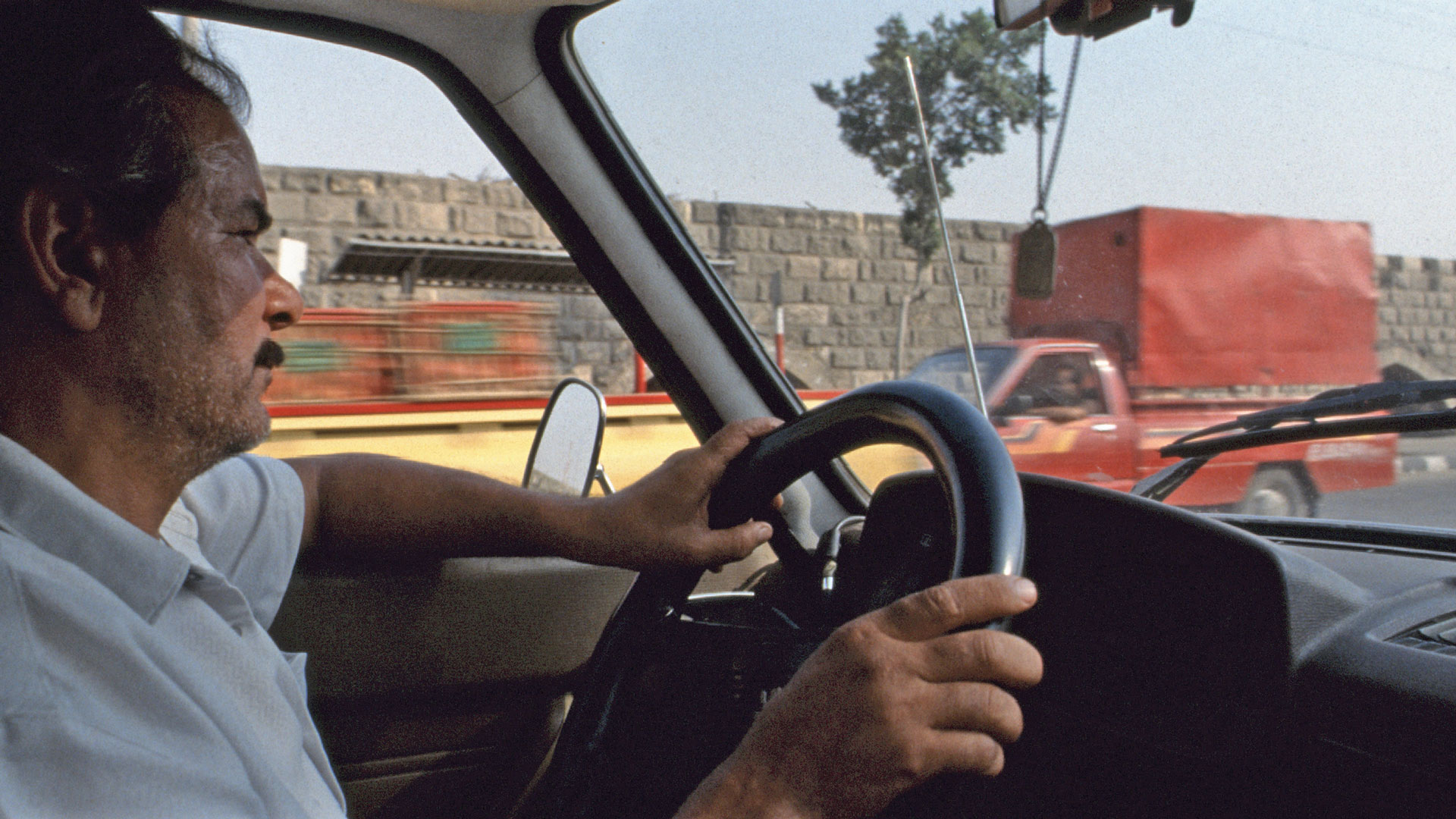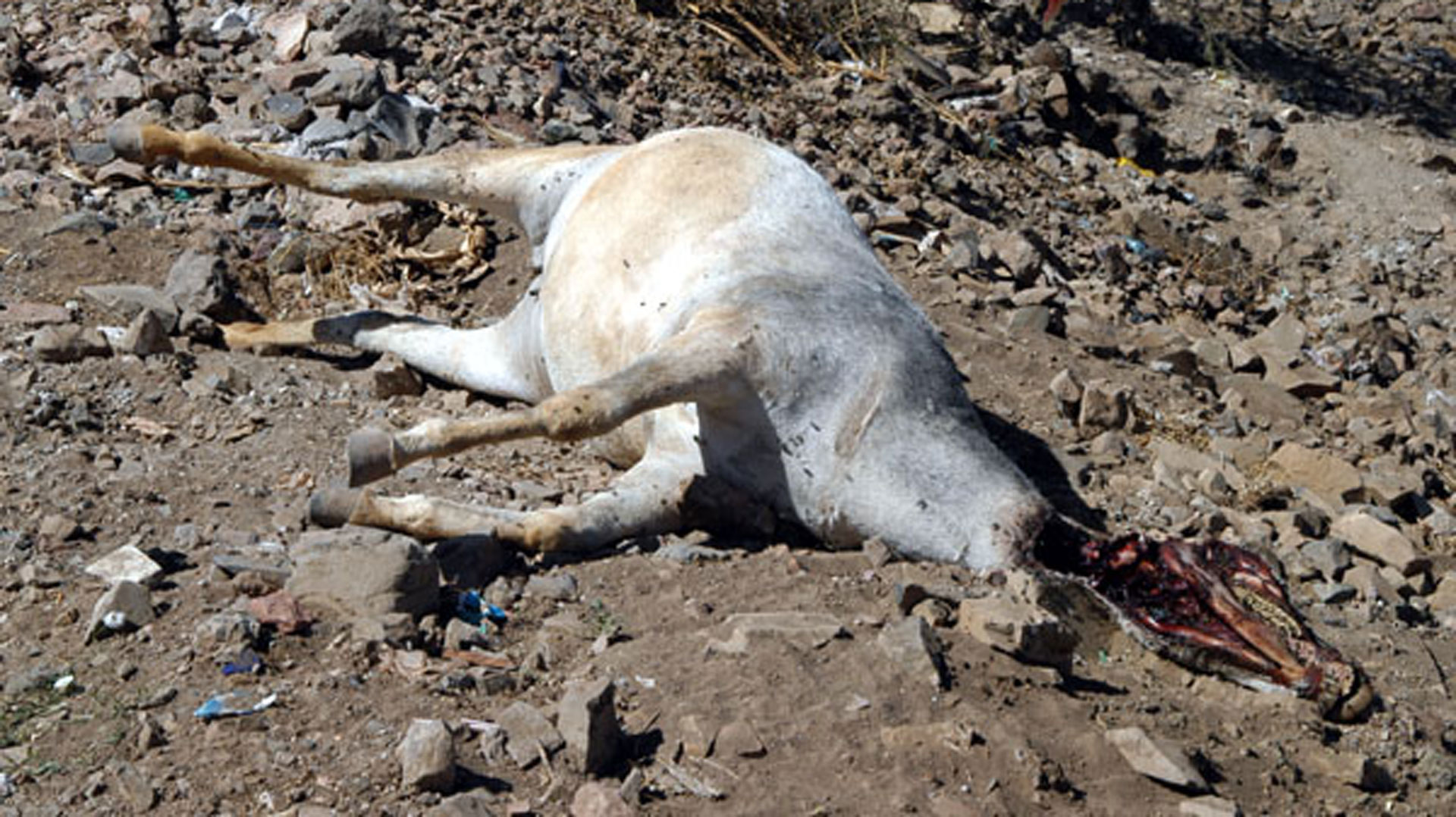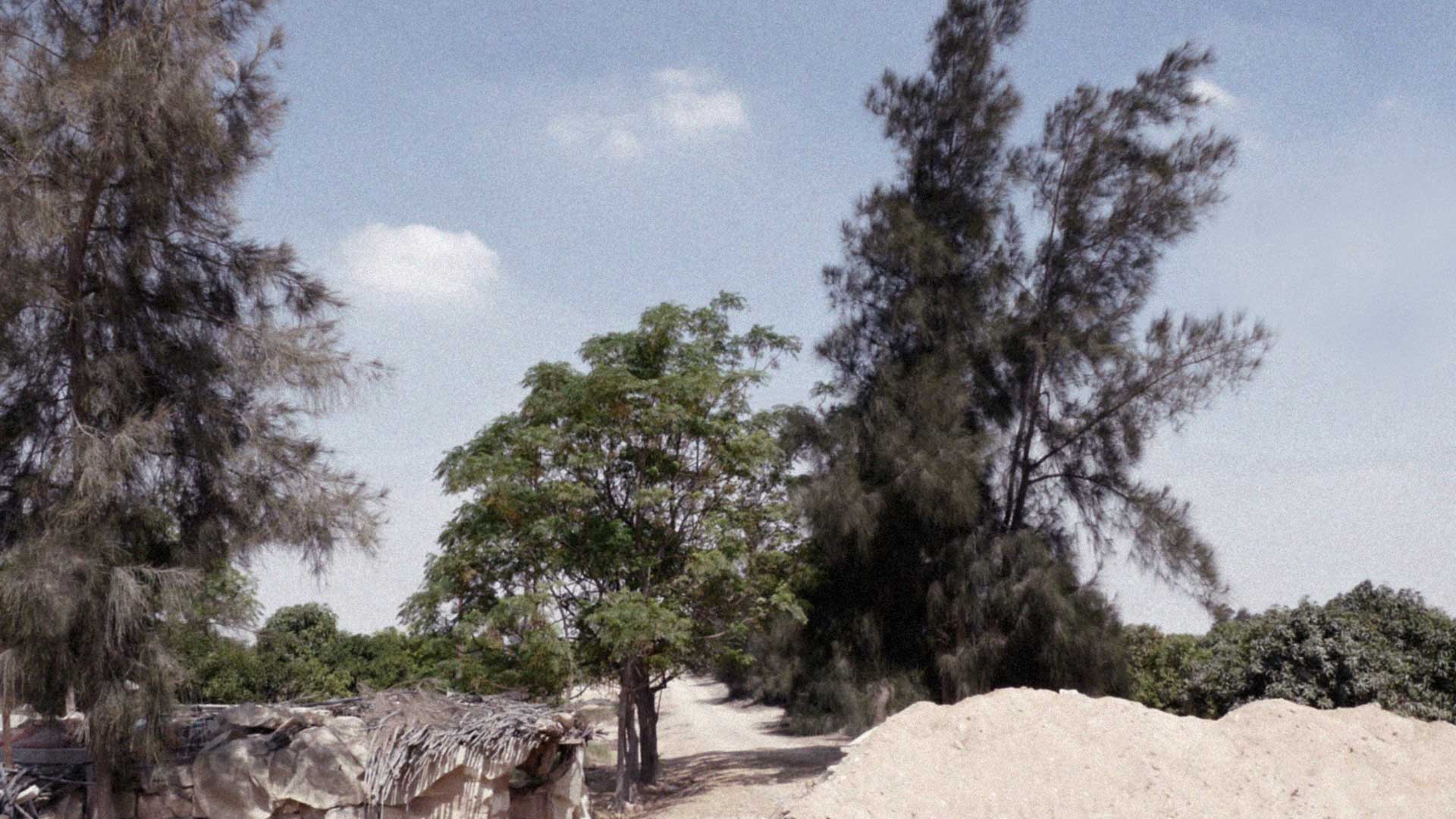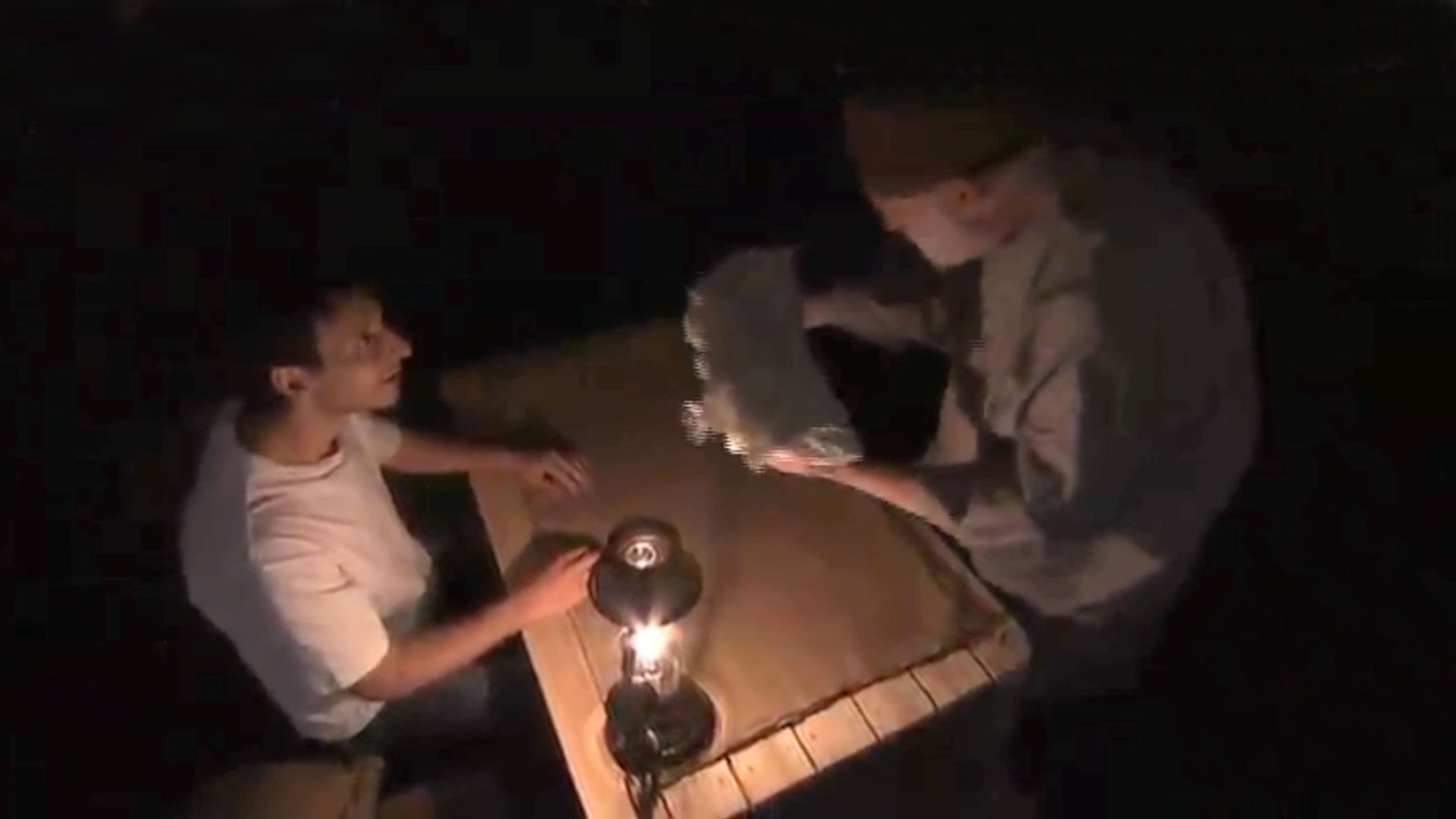The relic of Bir Hooker: The Discovery
Continued from
The relic of Bir Hooker: How it all began
Travelogue by Gregor Spörri (1988)
The rickety Peugeot 504 struggles through the round-the-clock traffic jam. While the cab driver’s feet dance on the pedals, he hammers his fist incessantly on the steering wheel. Obviously, the only way to make any headway in this chaos is by pushing and honking recklessly. I look at the dashboard to find out how many “millions” of kilometers the rickety car has already clocked up. However, the speedometer and odometer don’t work, nor does the ventilation – not to mention the air conditioning.
When we finally reach the city limits, the traffic decreases rapidly and I can breathe again. Ahmed didn’t hide from me that the destination was outside Cairo. However, I am surprised that we are traveling on the desert road towards Alexandria.
Instead of urban canyons, palm groves, bush landscapes and sandy hills now pass by the open windows all around. We overtake donkey carts and roaring trucks that blow stinking clouds of soot into the air; we dodge potholes, piles of burning palm fronds and animal carcasses. Most of them are strays such as dogs or cats that have been run over. But there are also donkeys among them, their bellies bulging with decomposition gases and stretching out all fours. Occasionally I hold my camera out of the window and take a picture.
Two and a half hours later, we leave the desert road at Bir Hooker and turn onto a dirt track. The 504 bumps along the road to a farmhouse surrounded by date palms and a mud-brick wall. Children play in front of the gate. They come running and stick their smiling faces inside the car. The driver presses the horn. I’m getting out. The children immediately surround me with a big hello.






Bir Hooker, Wadi el Natrun, 120 kilometers from Cairo
A pretty remote place for a souvenir store, I think, as the trader comes to the gate. The Arab is half a head taller than me and wears the traditional men’s dress, the jallabija. I estimate him to be over 70 years old. His elongated, sharp-edged face has something of Pharaoh Akhenaten about it.
The driver parks his Peugeot under the palm trees and makes himself comfortable on the back seat with the doors open all the way round.
Nagib, as the old man introduces himself, first shoos away the crowd of children, then leads me around the outside to the back of the house. I look around for something like a salesroom, but there’s nothing there except a wooden bench and a small table. Nagib asks me to take a seat and then disappears into the house. Shortly afterwards, he returns with tea and dates. While the drink steams in the glasses, he digs a shisha out from under the bench and sits down next to me. Sucking on his pipe, he looks me up and down, then asks in broken English: “Where are you from?”
“From Switzerland.”
“Hmmm … What do you want?”
I give him a funny look. “I’m here for the souvenirs.”
Now it’s him who’s looking funny. “What kind of souvenirs?”
I am irritated. “But this Ahmed from the Hotel Capsis in Cairo. You know him, don’t you?”
Nagib nods. “He’s my nephew.”
“Okay, so, your nephew told me you had some very nice pieces for sale. And because I’m looking for a decorative memento for my home …”
“Decorative memento?” the old man interrupts me and grimaces. He then wants to know what I do for a living and why I came to Egypt. I wonder what that has to do with him, but then I tell him about my company and the pyramid experiments. He listens attentively and occasionally asks me a question. When I mention the rock chamber under the pyramid of Khufu, he raises his eyebrows for a moment. Then nothing happens for a while. He smokes and looks off into the distance. I sit next to him, drinking tea and chewing his dates.
Finally, Nagib puts the smoking device aside. “My nephew was wrong about you. What I have to offer is certainly not what you are looking for. I’ll write him a note and then the cab will take you back to the city.”
I feel like the biggest idiot. The day is ruined. And so is my mood. “Ahmed is going to hear something from me!” I exclaim.
Nagib stands up. A young woman comes out of the house. I find out later that it is his granddaughter. The two of them chat away. I don’t understand a word. The woman disappears back into the house and the old codger takes another seat next to me.
Again, nothing happens for a while, then Nagib says, barely louder than a murmur: “I could show you something for a fee.”
I react irritably: “You just said you had nothing for me!”
“I just want to show you, not sell you.”
“And I’m supposed to pay for that too?” I complain.
Nagib tells me that he sells art treasures taken from old tombs to well-heeled collectors from all over the world.
In turn, I wonder how the barman could have had the idea of seeing me as an antique collector. These guys usually wear fine fabrics and silk ties, while I walk around in a T-shirt, washed-out jeans and worn-out sandals. I can only think of one answer: Ahmed listened to the conversation between Jochen and me last night and drew completely wrong conclusions from it.
“He is very, very old,” I hear Nagib’s voice in my ear. “Very few people have ever seen him.”
I look at Nagib from the side. His gaze is directed into the distance again.
“You’re interested in what the Great Pyramid is all about, aren’t you?”
I furrow my brow.
“Man is afraid of time, but time is afraid of the pyramids.”
What is he talking about?
“When you have seen what I am prepared to show you, you will see the pyramid with completely different eyes.”
Is the old man taking the piss? I ask him: “You know the true purpose of the Great Pyramid?”
“No, but I know some very old legends.”
The clay-plastered walls shimmer in a pale blue. Curtains instead of doors separate the rooms. Nagib leads me into a room at the back of his house. There is a chest of drawers there, a blind mirror, a sofa with a dingy red blanket over it, a wardrobe and two wooden chests. The room looks completely cluttered. Although the furnishings are old and worn, they still look far too feudal for an Egyptian country house. As the son of a period cabinetmaker, I think I know that this is English furniture from the late 19th century.
Nagib asks me to take a seat on the sofa, digs a bunch of keys out from under his dress, bends over one of the two chests and opens it. I stretch my neck, but his back blocks my view. When Nagib turns around, he is holding a long bundle wrapped in brown leather. He puts it down next to me on the sofa and unties the strings. Dirty white linen emerges from under the leather. He carefully unfolds the fabric.
I look at the musty-smelling object with a mixture of curiosity and amazement. It has the shape of a toggle, is about 30 to 40 centimeters long, six to eight centimeters thick, flattened on the upper side and bent twice lengthwise. A piece of bone sticks out of the thicker end. What is that? A chopped-off goat’s leg? Is the old man taking the piss? I take a closer look. The hairless, brownish skin, partially infested with mold, has burst open in several places. The fibrous tissue underneath gives the impression that mice have gnawed on it.
I lift the creepy thing up. It weighs a few hundred grams. Perplexed, I turn it over and freeze at the same moment. A cold shiver runs down my spine. This is absolutely impossible, I think. What I’m holding in my hands can’t possibly exist! I force myself to take my eyes off it and look up at Nagib. He stands above me with an impassive face. We stare at each other for a moment. His dark eyes reflect the knowledge of a monstrous secret from times long past.




I can’t and don’t want to believe it, so I study the finger more closely. Nagib notices my suspicion, reaches into the chest again, pulls out a leather folder and hands it to me. The folder contains an old magnifying glass and an envelope with a yellowed document. A rusty paper clip holds a kind of checklist to tick off, a hand-cut x-ray and a faded Polaroid photo of the finger. Nagib explains to me that he inherited the relic from his father, who in turn took it over from his father. The old man can’t or won’t tell me where the finger originally came from. However, he explains that his deceased son had the relic examined by an acquaintance in Cairo in the 1960s.

Is the relic a fake
My father is a cabinetmaker by trade. As a boy, I often went to his workshop after school to make myself some kind of toy.
I am therefore familiar with a wide variety of materials and know how different types of wood and leather, fabrics, plastics, etc. feel.
With this knowledge and the feel of my fingers, I examined the relic. The magnifying glass is a great help. But no matter how hard I strain my eyes, I can’t find anything that points to a forgery.
After a good hour, Nagib tells me that my visit is over. I want to take a photo of the finger, for which I naturally have to put down a generous baksheesh. Unfortunately, the 24 mm film in my camera is already half full. To document the enormous size of the finger, I place an Egyptian 20-pound note next to it. At my request, Nagib also takes a picture of me with his finger on my lap. He then accompanies me outside, where the cab driver is already waiting impatiently. I ask the old man if he would sell the relic, which he firmly refuses to do.


During the drive from Bir Hooker back to Cairo, I continue to think hard. Have I overlooked something? According to him, the old man deals in stolen antiques. Why not with counterfeits too? There is certainly a lot of money to be made with imitation figurines, vessels, furniture and other objects from the Pharaonic era, but with this? What’s more, a forgery of this quality, with documents and an X-ray, is certainly not easy or cheap to produce. So why all the effort? And then Nagib didn’t even want to sell me the thing. The longer I think about it, the more certain I am that Bir Hooker’s relic is not a fake!
Continue reading
The relic of Bir Hooker: Analysis
Spörri has dealt with the mysteries surrounding the relic of Bir Hooker in his science fiction thriller LOST GOD – The Last Judgement.
Back to
Mystery research